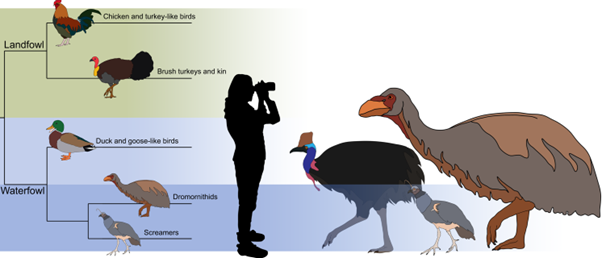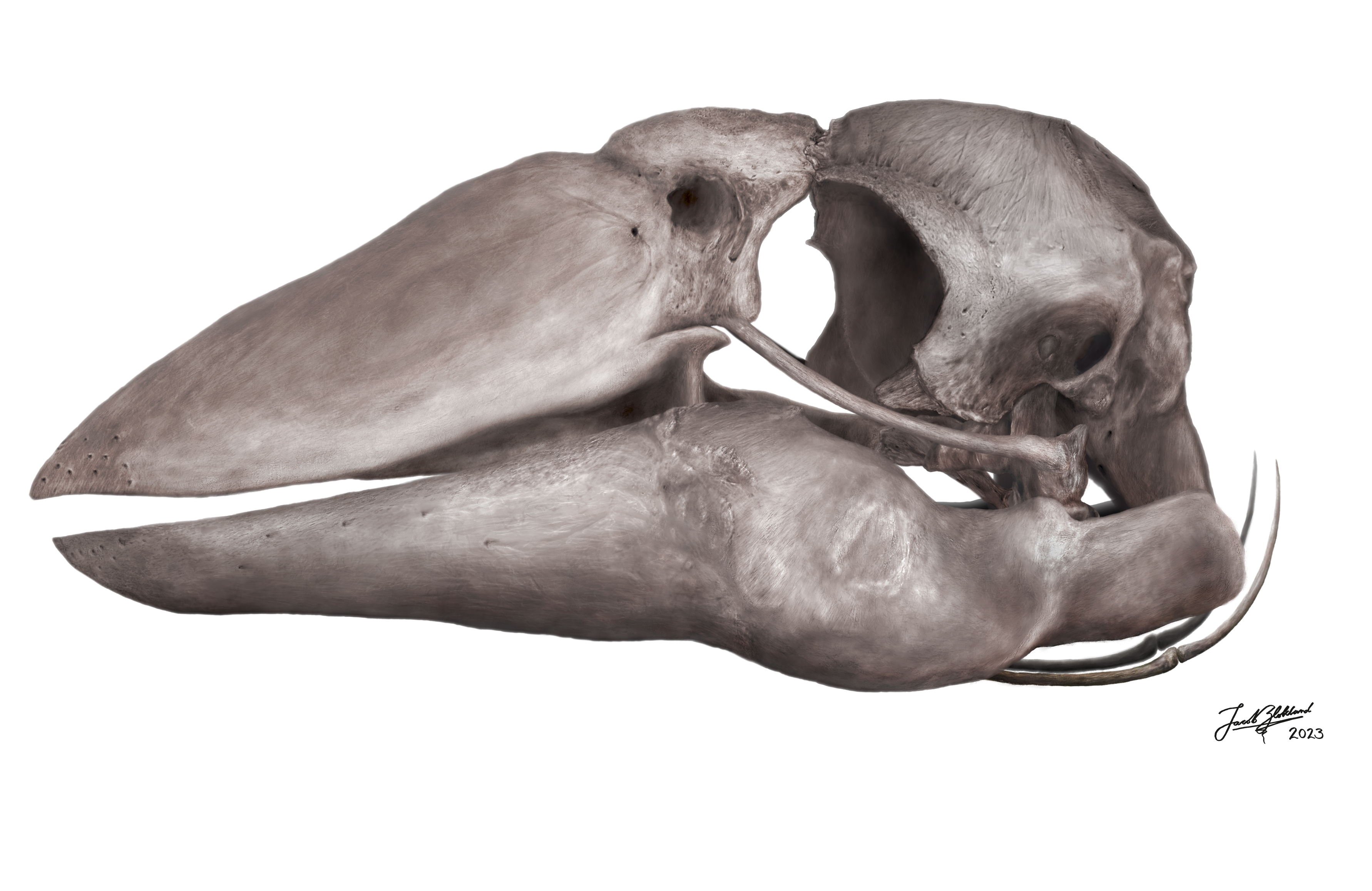Several fossil remnants of a huge bird called Genyornis newtoni, including the first intact skull, have been described, offering insight into the lifestyle of the last of the giant thunder birds that once roamed Australia.
If you think Australia’s existing fauna are terrifying, take a look at what used to inhabit the continent. A starring role goes to the Dromornithidae (also known as mihirungs or thunder birds), which include what is thought to have been the largest bird that ever lived, Dromornis stirtoni. By the time the first people reached the continent, Dromornis and many other mihirungs were long gone, but at least one member of the family remained. Whether through hunting, egg consumption, or the widespread use of fire, humans quickly spelled its doom.
At 230 kilograms (500 pounds), G. newtoni was about half the weight of its heaviest ancient relatives – but it was still one of the largest birds humanity has ever encountered, making it a subject of much interest. Nevertheless, it has taken 128 years from first being scientifically described for us to get much idea of how it looked and lived.

A comparison of the size of Genyornis newtoni, a human, and modern birds, including the cassowary – which, while not related provides a comparison for how scary the thunderbirds could be.
Image Credit: Phoebe McInerney.
The original skull used in the scientific description was; “Transported to Adelaide on camel and stuck together with flour and water” to repair the damage, Flinders University PhD student and study co-author Jacob Blokland told IFLScience. “There was lots of artistic license in the reconstruction.” For more than a century nothing better was found.
The original skull was found at Lake Callabonna, and subsequent scientists have been aware there are plenty more Genyornis fossils there, along with others that reveal life in a long-lost wetland. However, Blokland explained; “It’s on private land, very hard to get to and has sandstorms.” To make things worse, the site is now a salt lake, and as soon as fossils removed from it dry out the salt starts breaking them up. Visits by paleontologists have been few and far between.
Eventually, however, the lack of an intact G. newtoni skull was too much, and Dr Trevor Worthy organized a series of visits, which returned with several high-quality specimens.

Some of the valuable fossils used to reconstruct G. newtoni accurately for the first time.
Image Credit: Jacob C. Blokland
These reveal a bird that could walk comfortably, but still retained a heavily aquatic lifestyle. Specifically, it has features that allow modern-day waterfowl to seek food underwater without ingesting unwelcome quantities of water.
Blokland told IFLScience that Genyornis probably; “Walked long distances between ephemeral wetlands,” and would have eaten any fruit it encountered on the way, but relied heavily on the foods those wetlands offered after rains. “We imagine it was an ecosystem engineer, crashing around in the reeds and uprooting things.”
The specimens reveal a braincase described as “massive” in the paper – but according to first author PhD candidate Phoebe McInerney, that doesn’t mean G. newtoni was smart. “Their brains were smaller than you would expect. Normally the braincase is very close to the brain.” McInerney told IFLScience. G. newtoni instead filled the space with airy bone. “Brains are very energy and nutrient-hungry. If you don’t need more brain, then its more energy-efficient to fill the space up with bone.” Words some people seem to have taken to heart.

Artistic reconstruction of the skull of Genyornis newtoni, revealing its large braincase and its remarkable beak.
Image Credit: Jacob C. Blokland
The braincase grew, McInerney said, not to make room for brains, but to support beaks capable of eating large fruit. McInerney noted there are reports of trees clinging on in isolated Australian locations that produce fruits that no surviving species, humans aside, can distribute. It’s possible Genyornis was once responsible for their spread, like a true version of the avocado myth.
The beak the braincase supported is particularly interesting. “Genyornis newtoni had a tall and mobile upper jaw like that of a parrot but shaped like a goose, a wide gape, strong bite force, and the ability to crush soft plants and fruit on the roof of their mouth”, McInerney said in an emailed statement.
The Dromornithidae have been labelled the “demon ducks of doom” for their huge size and relationship to living waterfowl. Blokland noted the relationship may be closer to the South American birds known as screamers and Australia’s magpie goose. However, he added; “The term goose can cover quite a wide range – it really just means a long-legged waterfowl that has become a bit more terrestrial.
On that basis this Genyornis certainly qualifies. At a weight fifty times even a large living goose, the team thought the term “gigagoose” was appropriate.
A final feature of Genyornis revealed by the new specimens is a distinctive casque on its head. Whether this was for sexual signaling is unknown.
The study is published in the journal Historical Biology
Source Link: First Intact Skull Of Australia’s Terrifying Extinct “Giga-goose” Revealed